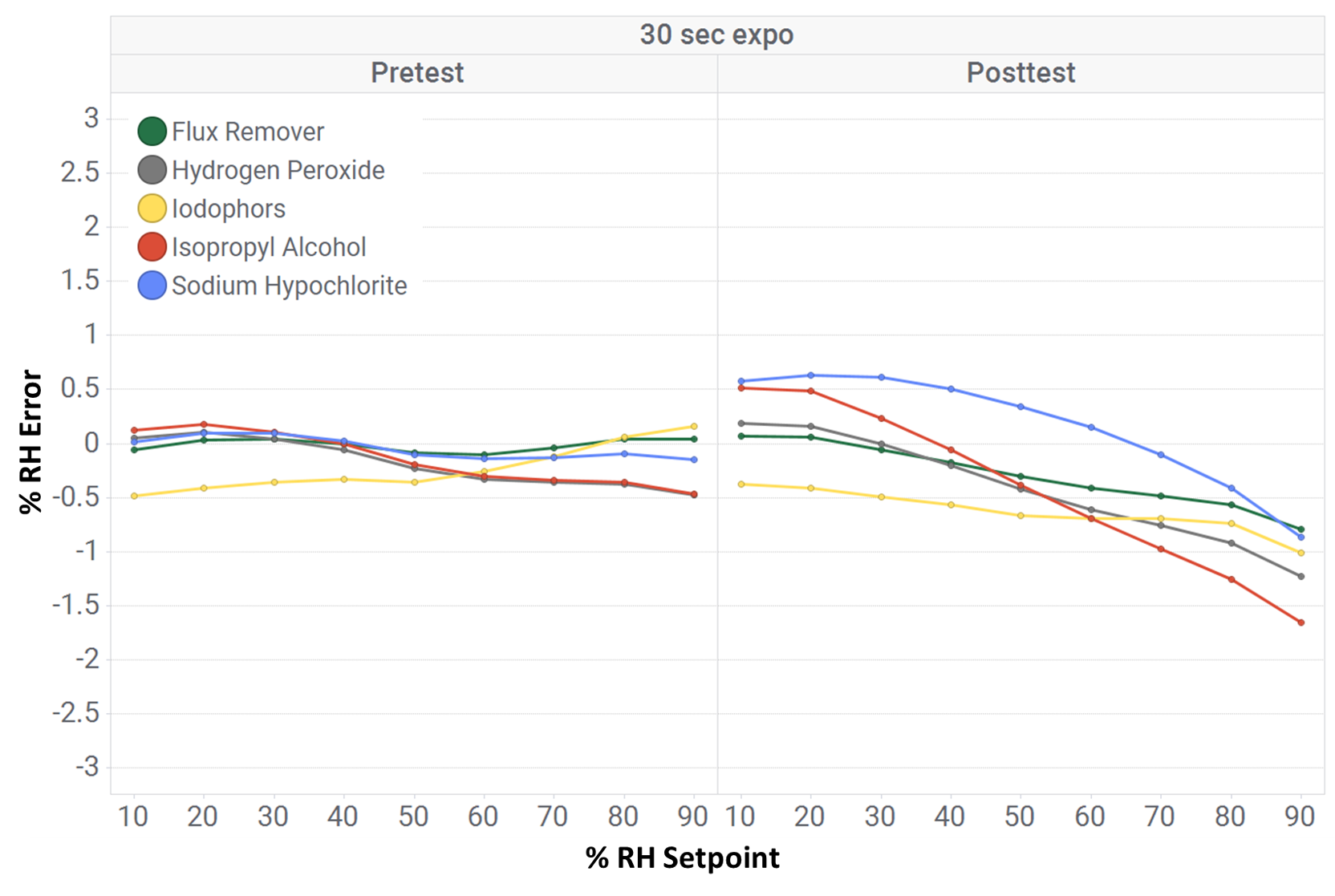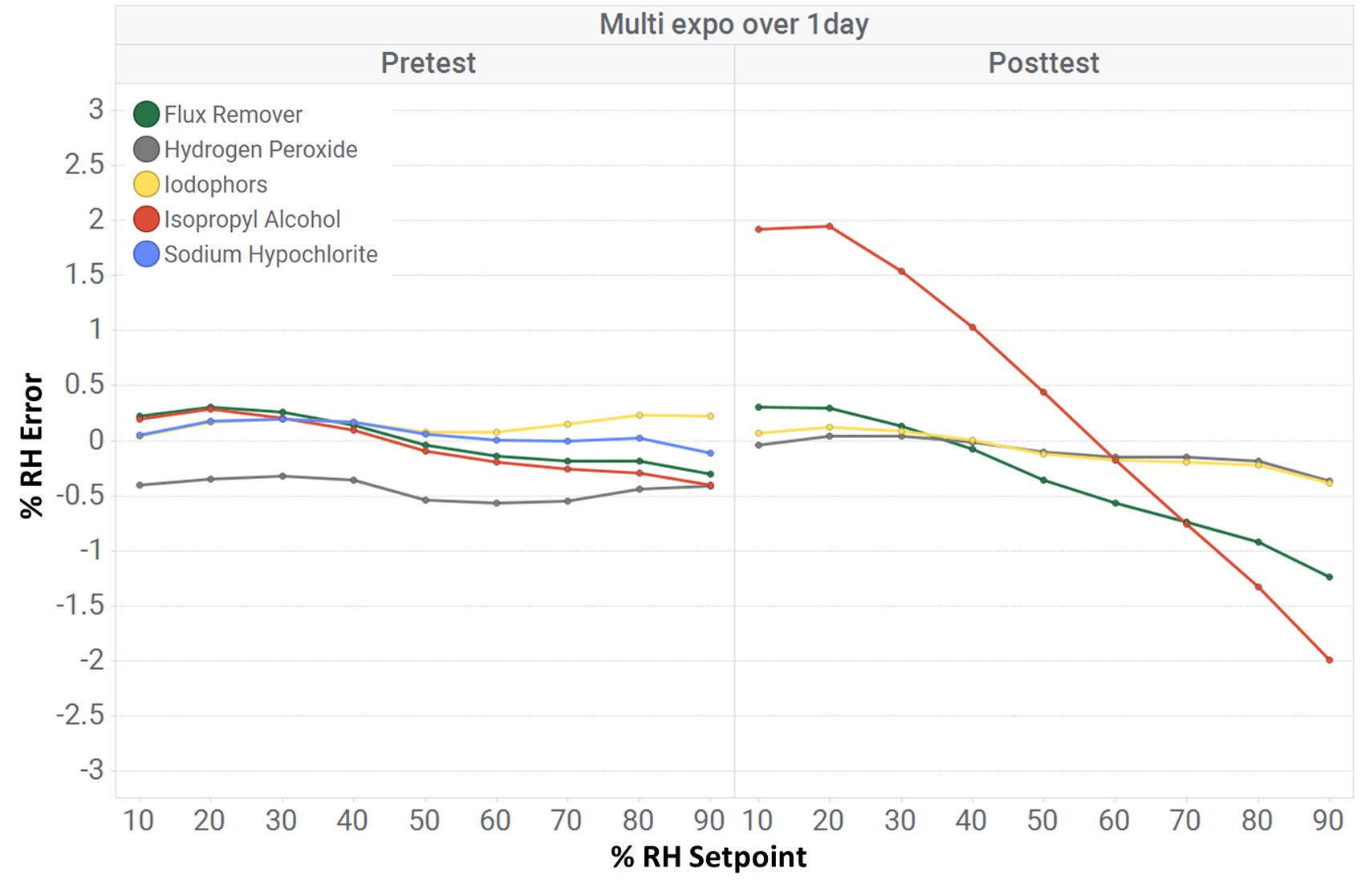SNAU265C june 2021 – july 2023 HDC3020 , HDC3020-Q1 , HDC3021 , HDC3021-Q1 , HDC3022 , HDC3022-Q1
2.2.1 Saturation and Recovery Tests
The chemicals in this list were exposed to the sensor only for a short period of time. Two conditions were evaluated for each chemical: a 30-second exposure and eight 30-second exposures over a period of 24 hours.
Table 2-1 shows the chemicals in this list. The device operated at 3.3 V at 30°C and an average humidity error was calculated.
| CHEMICAL | CONCENTRATION | OBSERVABLE DAMAGE | NUMBER OF HDC3020 UNITS |
|---|---|---|---|
Isopropyl alcohol | 65.7% m/m | None | 4 per exposure rating |
Hydrogen Peroxide | 7.35% m/m | None | |
Sodium Hypochlorite | 4.5% m/m | Copper traces corroded | |
Iodophors | 74 ppm m/m | None | |
Flux - Microcare Universal Contact Cleaner | 100% | None |
30-Second exposure: Five drops of each chemical was dropped directly on the sensor opening. After 30 seconds, the sensor was turned over to get rid of excess solution. After a minute of exposure, the device was cleaned to prevent further exposure.
Overall, Figure 2-1 shows there is not much change between the pre- and post tests for these chemicals other than a small negative gain.
 Figure 2-1 Short-Term Exposure: One-Time Exposure.
Figure 2-1 Short-Term Exposure: One-Time Exposure. Multiple 30-second exposures: Four HDC3020 devices followed a similar procedure as the 30-second test. The procedure was performed seven more times.
Overall, most of the chemicals did not have any major shift other than a negative gain.
However, exposure to Sodium Hypochlorite resulted in some corrosion on the copper traces on the board and some of the pins. To clean the PCB, the opening was protected using a kapton cover and it was cleaned using a horsehair brush and DI water. A humidity sweep shows that the devices had a very large negative gain shift, especially at higher humidity setpoints.
Exposure to Isopropyl Alcohol also resulted in some negative gain shift at lower humidity setpoints. Any further exposure would result to severe gain shifts.
Figure 2-2 shows the sweeps for this exposure.
 Figure 2-2 Short-Term Exposure: Multiple Exposures.
Figure 2-2 Short-Term Exposure: Multiple Exposures.